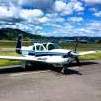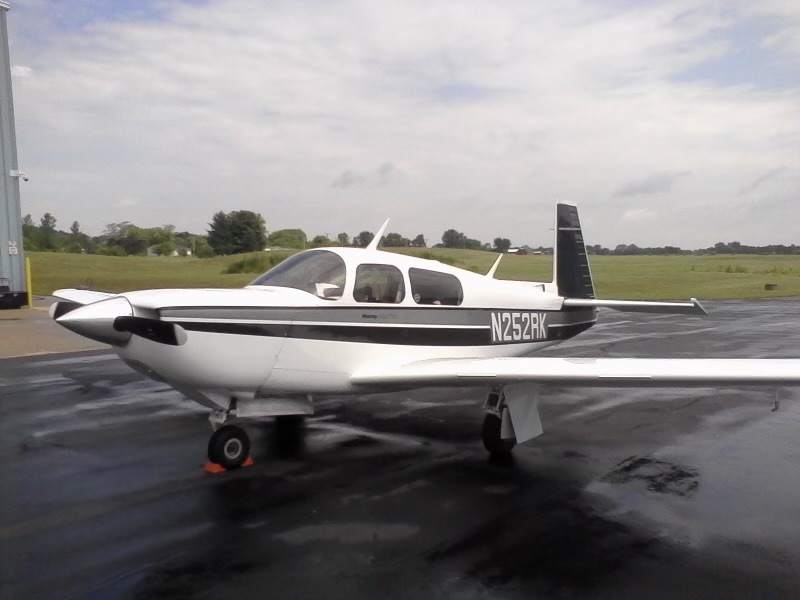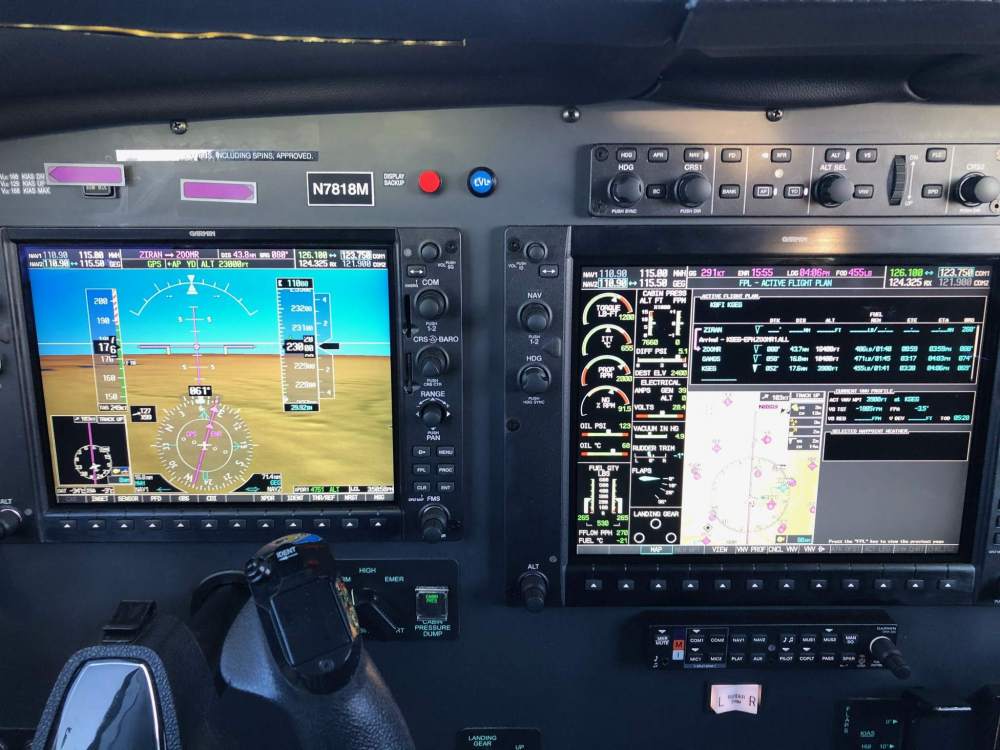-
Posts
5,677 -
Joined
-
Last visited
-
Days Won
28
Content Type
Profiles
Forums
Blogs
Gallery
Downloads
Media Demo
Events
Everything posted by Ragsf15e
-
I think I found the place on MS. Waltham aircraft clocks in Ozark, AL. I just looked, it was $212 for the “overhaul”. Came back looking and working like new.
-
Ahh yes, but “permanent display “? Does that mean that something like the av-20s can’t be a clock because time is not displayed permanently- ie, no time shows on the ADI screen? What about my gns430w... time is “permanently” buried 4 button clicks away. My head hurts. Btw, I just paid $300 to have my mechanical windup clock mounted in the yoke refurbished, so I’m legal!
-

1976 m20f executive gear retract problem
Ragsf15e replied to Ripley98's topic in Vintage Mooneys (pre-J models)
My 68 got electric gear at the factory when it was born and doesn’t have a squat switch. It does have the airspeed switch. Ive also had a similar problem a couple years ago in very cold weather and found my up/down switches in the belly to be gunked up and sticking. Cold made it worse. Cleaning them worked. It might be your donuts, but not necessarily, so I’d do a little more troubleshooting before spending lots o $$ for all new pucks. Generally old pucks stay compressed in the cold and thus don’t expand to (de)activate the squat switch. If you left from a heated hanger and the gear went up, it’s not sitting compressed, so that shouldn’t happen unless you landed somewhere really cold and let it sit (with weight on it for compression). When exactly did it happen in flight? -
Interesting, what skins do you mean? My 68f has panels all down the belly with hundreds of screws. They allow access to pretty much everything. Do you have a different arrangement?
-
Yeah, that’s a good point. I think they probably see that as a lucrative business model - support the currently working legacy autopilots but provide an eventual path to their own gfc500. At the same time, they sort of blocked competition for their own gps line. Do you think Garmin will make it compatible with Trutrac/Aerocruz whenever that comes out?
-
Eventually Avidyne will likely add the 275 to their approval. Until then, it probably works, but yeah, Garmin isn’t going to spend money certifying other peoples stuff.
-
Well that’s funny. Here I am picking up my airplane from getting dual G5s installed and I think I’d have been better off with 2 of these! The G5s were a real tight fit and couldn’t be flush. They also slightly cover some writing on the panel (callsign). For a 51 year old airplane these would have been a superb upgrade with limited panel surgery. In my opinion, it looks like they are more capable than G5s too... syn vis (yeah its small), flight path marker, auto pilot connectivity, and hsi ADSB weather display, etc. Maybe the G5 will get an upgrade to match?
-

New pilot looking at a '75 M20F
Ragsf15e replied to PhateX1337's topic in Vintage Mooneys (pre-J models)
Dang, I really wish you could take your wife/son in the airplane! We need more kids in aviation, not less! The M20F is a terrific traveling airplane for a small family! Are you sure she won’t reconsider? -
Now that I agree with!
-
I might be “comfortable” with that too, but I’d probably get a ferry certificate to fly it like that. I don’t think there’s any way to placard half the fuel storage “inop” and be legal.
-
For Density altitude above ~5,000, yes, you should lean somewhere rich of max power. It will not be very much different than full rich. At density altitude below ~5000’, full rich is appropriate. There are better ways to lean (like Target egt) during climb, but you need an engine monitor with all 4 cylinders. Even with a good engine monitor, i start takeoffs below 5k with full rich. After takeoff, use Vy to a safe altitude (~100mph to pattern altitude or whatever you consider safe), then pitch down slightly to get 120mph and continue your climb at 120 until cruise altitude. Rpm should stay at 2600-2700. If you’re still getting above 400 cht you can richen slightly. I think being slightly richer and faster is going to make a big difference for you. We have a paper around here somewhere that shows climbing at a speed higher than Vy is more efficient on cross country flights, so your climb rate may decrease slightly but you make up for it with more distance downrange. You will probably only notice a very small decrease in climb. And it’ll definitely help your cylinder temps.
-
What airspeed do you climb at? Im sure the issue has a component of design/condition of your baffles, but there are lots of operational things you can control to make the problem worse or better... are your cowl flaps working properly and set properly? What airspeed do you climb at? Most people cruise climb at around 120mph which will increase airflow and cooling noticeably over Vy or Vx. Fuel flow is very important too. A small reduction in whats required can have an outsized heat penalty at full power and low speed. So Denver... I had my worst cylinder heat issue there too, but it was in the summer... be very careful leaning for takeoff. If you need to, do it, but make sure you’re clearly rich of max power. The thin air at higher altitude (Denver) doesn’t cool as well, so a speed increase in climb will help increase volume of cool air. By all means, keep looking at the mechanics of cooling your engine, but be open to operating in a “cooler” way.
-
Yeah, sublimation can be overrated. Sometimes good, sometimes not as much. I fly a FIKI turbine (boots) at work in the pacific nw and get a reasonable amount of ice. Sometimes it comes off quick when you get on top, sometimes not so much. There’s a lot of weird weather phenomena related to humidity, dew point, temperature and sun angle. Honestly, the Time i picked up the most ice, I was down to 400fpm climb at 20,000’ (from 1500fpm). Got on top, accelerated to cruise but was 30kts slow... 220 from 250 planned. There was a layer above me shading the sun. Ice didn’t come off until I descended below the freezing level. Had to decide if I still had enough fuel at the slower speed.
-
What David says is your best bet, however, do you know your takeoff, sea level fuel flow? I second getting some type of egt cht for all the cylinders. It may be worse or better than you think... or you might find just one warm cylinder and then start looking at intake leaks, ignition issues, etc.
-
Top of the cloud is usually the worst spot. Know where the freezing level is because it will come off even faster than it came on if you can get to air even 1 degree above freezing. Yeah, declare if you need to, that’s not a good spot to be in because if it keeps building you’ll quickly lose climb capability and may only have one way to go!
-
I tend to plan no more than a day or two out in the winter. Longer in the summer. In a turbo, fiki airplane, extend the winter a few days. Honestly, the weather guessers are no good past about 3 or 4 days, even for the big stuff. But of course, now I’m gonna catch crap.
-

A question of winds, geometry, TAS vs GS, and the G1000
Ragsf15e replied to Ragsf15e's topic in Avionics/Panel Discussion
I actually think you nailed it. Here’s an excerpt from the G1000nxi manual (mine is not an nxi however). It doesn’t say “relative to heading”, but it does say “relative to the aircraft”, so close enough for government work as you say. -

A question of winds, geometry, TAS vs GS, and the G1000
Ragsf15e replied to Ragsf15e's topic in Avionics/Panel Discussion
That’s definitely plausible. I’ll try to read some of the g1000 documentation and see if they define exactly what they mean by xw / tw to see if it’s referenced to heading or course. The Garmin documentation is sometimes very good and other times lacking in things that seem like they should be covered. -

A question of winds, geometry, TAS vs GS, and the G1000
Ragsf15e replied to Ragsf15e's topic in Avionics/Panel Discussion
The wind is broken down into xwind and tailwind right next to the TAS, just above/left of the hsi. Shows 27 kts tail and 99 xwind. I think gacoon is onto something though... a couple degrees on the compass might do it. There are 2 ahrs, each pfd has its own, and they are normally off a degree or two from each other. -
Oh yeah, heck no! I was feet up on the lazy boy in the fbo all afternoon!
-
Commercial multi works. 2nd class medical. Haven’t seen $2000 yet, but I have done a few of these contract flights... out at 9am, Stanford football game, back by 5pm. I just sit copilot and talk on the radio because I’m not typed in a citation. It’s single pilot, but pax decided to pay the $1000 a day extra for two pilots... it’s not a terrible days work.
-

A puzzle: strange glide slope indication
Ragsf15e replied to 0TreeLemur's topic in Avionics/Panel Discussion
That I would definitely buy, and there’s absolutely nothing wrong with having to go missed. Talking about the experience on MS is much better than us trying to figure out why you turned into a smoking hole after getting disoriented during a rushed approach in imc! Also, going missed is real good for you. You’ll be more likely to do it in the future if you need to instead of pushing on in a bad situation. -

A puzzle: strange glide slope indication
Ragsf15e replied to 0TreeLemur's topic in Avionics/Panel Discussion
I don’t doubt that it could happen to some degree, but it’s pretty darn tough to get a false gs indication on the front course of an ils unless you’re really far above the glide slope. The backcourse does occasionally have some erratic indications but you expect those. The conventional wisdom with false indications on the front course are that they can occur in 3 degree increments above the glideslope, so if your normal 3 degree, 5 miles out faf is at 1500’ above tdze, you could see a false indication at 3,000’ or 4,500’ above tdze (6 degrees or 9 degrees). If you’re on a 6 degree glide slope to the runway in imc, you need to go missed anyway. -
I agree. All the SLs SBs etc need to be accessible... are they widely available elsewhere?






